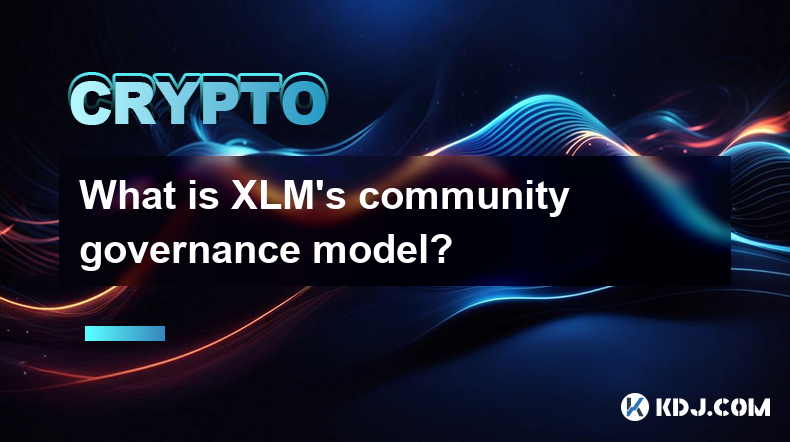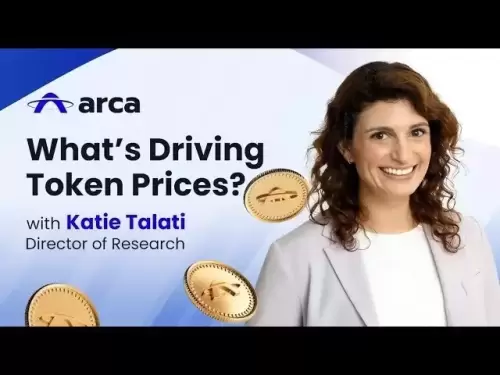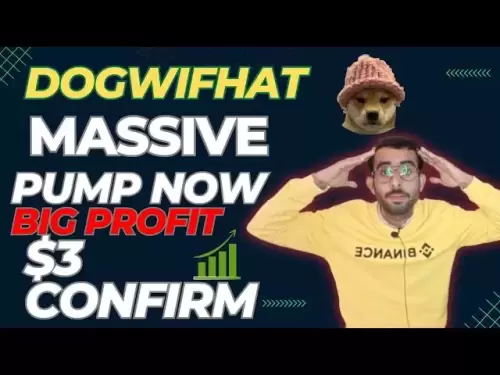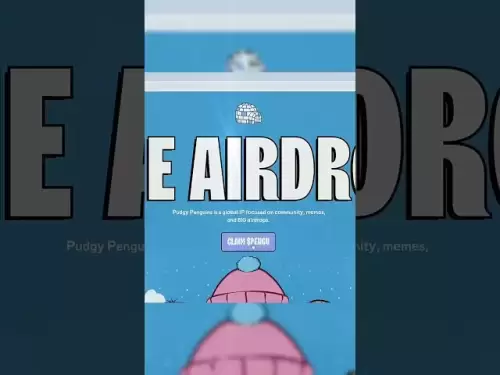-
 Bitcoin
Bitcoin $107,275.1551
-0.32% -
 Ethereum
Ethereum $2,485.3056
1.77% -
 Tether USDt
Tether USDt $1.0005
0.03% -
 XRP
XRP $2.2223
1.31% -
 BNB
BNB $657.7608
1.39% -
 Solana
Solana $156.3566
3.02% -
 USDC
USDC $0.9999
0.01% -
 TRON
TRON $0.2791
1.09% -
 Dogecoin
Dogecoin $0.1651
0.45% -
 Cardano
Cardano $0.5738
2.78% -
 Hyperliquid
Hyperliquid $40.2672
5.82% -
 Bitcoin Cash
Bitcoin Cash $517.5487
5.30% -
 Sui
Sui $2.7981
-0.40% -
 Chainlink
Chainlink $13.3500
-0.36% -
 UNUS SED LEO
UNUS SED LEO $9.1220
1.12% -
 Avalanche
Avalanche $17.9515
-0.32% -
 Stellar
Stellar $0.2361
-0.44% -
 Toncoin
Toncoin $2.9423
2.33% -
 Shiba Inu
Shiba Inu $0.0...01145
-0.68% -
 Litecoin
Litecoin $86.1693
-0.63% -
 Hedera
Hedera $0.1493
0.64% -
 Monero
Monero $315.1374
1.81% -
 Polkadot
Polkadot $3.4002
-0.73% -
 Dai
Dai $1.0001
0.03% -
 Bitget Token
Bitget Token $4.5413
-1.35% -
 Ethena USDe
Ethena USDe $1.0002
-0.01% -
 Uniswap
Uniswap $7.1733
-0.57% -
 Aave
Aave $274.0465
-0.23% -
 Pepe
Pepe $0.0...09810
2.24% -
 Pi
Pi $0.5101
-3.10%
What is XLM's community governance model?
Stellar's governance blends on-chain and off-chain elements, with the SDF's influence gradually decreasing as community participation (via forums, the Community Fund, and protocol proposals) increases, aiming for a decentralized future.
Mar 14, 2025 at 03:16 am

Key Points:
- Stellar's governance model is a hybrid system, combining elements of on-chain and off-chain governance.
- The Stellar Development Foundation (SDF) plays a significant role, but its influence is gradually decreasing as community participation increases.
- Community members can participate in governance through various avenues, including the Stellar Community Fund and active participation in forums and discussions.
- The model aims to balance decentralization with the need for efficient decision-making.
- Proposals for changes to the protocol are debated and voted upon, with varying degrees of influence depending on the proposal's nature.
What is XLM's Community Governance Model?
Stellar Lumens (XLM) utilizes a unique community governance model that blends on-chain and off-chain mechanisms. Unlike some cryptocurrencies with purely on-chain governance, Stellar incorporates a significant off-chain element, primarily facilitated by the Stellar Development Foundation (SDF). This hybrid approach aims to balance the benefits of decentralized decision-making with the need for efficient and effective governance. The SDF's role is crucial, but its power is designed to diminish over time as the community matures and takes on greater responsibility.
The SDF, initially the primary driver of Stellar's development and governance, holds a significant, yet diminishing, amount of influence. They act as a steward, guiding the project and facilitating community engagement. However, their involvement is structured to decrease as the community’s participation grows. This gradual transition aims to ensure a truly decentralized governance structure in the long term.
One of the primary avenues for community participation is the Stellar Community Fund. This fund allocates resources to projects and initiatives proposed and voted on by the community. This process allows community members to directly influence the direction of Stellar's development by funding projects they deem beneficial. This mechanism is designed to empower community members to shape the ecosystem.
Beyond the Community Fund, active participation in various online forums and discussions is vital to Stellar's governance. The SDF actively engages with the community through these channels, soliciting feedback, and incorporating community input into development decisions. This open dialogue helps foster transparency and ensures community voices are heard.
Changes to the Stellar protocol itself are proposed and voted upon, though the process varies depending on the nature of the change. Simple changes might involve community consensus and collaboration with the SDF. More significant changes might require more formalized processes involving community votes and potentially specific thresholds to meet before implementation. The aim is to balance rapid adaptation with careful consideration of proposed changes.
The SDF's role extends to overseeing the technical aspects of the network. They play a crucial role in maintaining the network's stability and security, and in resolving disputes. However, their actions are often guided by community input and feedback, demonstrating a commitment to collaborative governance. This combination of technical expertise and community engagement is key to Stellar's governance structure.
While the SDF plays a significant initial role, the long-term vision is for a fully decentralized governance model. The foundation’s involvement is gradually reduced as community participation increases and the community demonstrates its ability to effectively govern the network. This transition is a key element of Stellar's vision for a truly community-driven project.
The Stellar community actively participates in defining the future of the protocol through ongoing discussion and collaboration. The aim is a shared responsibility for maintaining and developing the Stellar network. The processes and structures are constantly being refined to reflect the evolving needs of a growing and maturing community.
Community members can contribute in various ways, including participating in forums, proposing projects for the Community Fund, and contributing to the technical development of the protocol. Their collective involvement shapes the future of the Stellar ecosystem and fosters a collaborative and inclusive governance structure.
This evolving model represents a balancing act between swift decision-making and broad community input. The emphasis is on the community’s increasing autonomy and responsibility in shaping the future of Stellar. As the community grows and matures, the SDF's role will continue to diminish, leading towards a fully decentralized governance structure.
Frequently Asked Questions:
Q: How can I participate in Stellar's governance?
A: You can participate by joining online forums, contributing to discussions, proposing projects for the Stellar Community Fund, and actively engaging with the Stellar Development Foundation and other community members.
Q: What is the role of the Stellar Development Foundation (SDF) in governance?
A: The SDF initially played a significant role, but its influence is gradually decreasing as community participation increases. They provide guidance, facilitate community engagement, and oversee technical aspects of the network.
Q: Is Stellar's governance completely decentralized?
A: No, it's a hybrid model. While aiming for full decentralization, the SDF currently plays a significant role, though this is designed to decrease over time.
Q: How are changes to the Stellar protocol decided?
A: The process varies depending on the change's complexity. Simple changes may involve community consensus, while larger changes may require formalized voting processes.
Q: How does the Stellar Community Fund work?
A: The fund allocates resources to projects and initiatives proposed and voted on by the community, allowing them to directly influence the ecosystem's development.
Disclaimer:info@kdj.com
The information provided is not trading advice. kdj.com does not assume any responsibility for any investments made based on the information provided in this article. Cryptocurrencies are highly volatile and it is highly recommended that you invest with caution after thorough research!
If you believe that the content used on this website infringes your copyright, please contact us immediately (info@kdj.com) and we will delete it promptly.
- Coinbase, Altcoins, and Listings: What's the Buzz?
- 2025-07-01 00:30:11
- Chainlink's Bullish Signals: Investors Bet on Long-Term Value
- 2025-07-01 00:50:12
- CICADA Finance Soars on BNB Chain: A TGE Deep Dive
- 2025-07-01 01:30:11
- MicroStrategy's Bitcoin Bet: Holdings, Sell-Off Concerns, and S&P 500 Dreams
- 2025-07-01 01:30:11
- XRPL EVM Sidechain: Ethereum dApps Unleashed on XRP Ledger!
- 2025-07-01 01:35:11
- Bybit, Kraken, and Tokenized Stocks: A New Era for Trading?
- 2025-07-01 00:30:11
Related knowledge

How to customize USDT TRC20 mining fees? Flexible adjustment tutorial
Jun 13,2025 at 01:42am
Understanding USDT TRC20 Mining FeesMining fees on the TRON (TRC20) network are essential for processing transactions. Unlike Bitcoin or Ethereum, where miners directly validate transactions, TRON uses a delegated proof-of-stake (DPoS) mechanism. However, users still need to pay bandwidth and energy fees, which are collectively referred to as 'mining fe...

USDT TRC20 transaction is stuck? Solution summary
Jun 14,2025 at 11:15pm
Understanding USDT TRC20 TransactionsWhen users mention that a USDT TRC20 transaction is stuck, they typically refer to a situation where the transfer of Tether (USDT) on the TRON blockchain has not been confirmed for an extended period. This issue may arise due to various reasons such as network congestion, insufficient transaction fees, or wallet-rela...

How to cancel USDT TRC20 unconfirmed transactions? Operation guide
Jun 13,2025 at 11:01pm
Understanding USDT TRC20 Unconfirmed TransactionsWhen dealing with USDT TRC20 transactions, it’s crucial to understand what an unconfirmed transaction means. An unconfirmed transaction is one that has been broadcasted to the blockchain network but hasn’t yet been included in a block. This typically occurs due to low transaction fees or network congestio...

How to check USDT TRC20 balance? Introduction to multiple query methods
Jun 21,2025 at 02:42am
Understanding USDT TRC20 and Its ImportanceUSDT (Tether) is one of the most widely used stablecoins in the cryptocurrency market. It exists on multiple blockchain networks, including TRC20, which operates on the Tron (TRX) network. Checking your USDT TRC20 balance accurately is crucial for users who hold or transact with this asset. Whether you're sendi...

What to do if USDT TRC20 transfers are congested? Speed up trading skills
Jun 13,2025 at 09:56am
Understanding USDT TRC20 Transfer CongestionWhen transferring USDT TRC20, users may occasionally experience delays or congestion. This typically occurs due to network overload on the TRON blockchain, which hosts the TRC20 version of Tether. Unlike the ERC20 variant (which runs on Ethereum), TRC20 transactions are generally faster and cheaper, but during...

The relationship between USDT TRC20 and TRON chain: technical background analysis
Jun 12,2025 at 01:28pm
What is USDT TRC20?USDT TRC20 refers to the Tether (USDT) token issued on the TRON blockchain using the TRC-20 standard. Unlike the more commonly known ERC-20 version of USDT (which runs on Ethereum), the TRC-20 variant leverages the TRON network's infrastructure for faster and cheaper transactions. The emergence of this version came as part of Tether’s...

How to customize USDT TRC20 mining fees? Flexible adjustment tutorial
Jun 13,2025 at 01:42am
Understanding USDT TRC20 Mining FeesMining fees on the TRON (TRC20) network are essential for processing transactions. Unlike Bitcoin or Ethereum, where miners directly validate transactions, TRON uses a delegated proof-of-stake (DPoS) mechanism. However, users still need to pay bandwidth and energy fees, which are collectively referred to as 'mining fe...

USDT TRC20 transaction is stuck? Solution summary
Jun 14,2025 at 11:15pm
Understanding USDT TRC20 TransactionsWhen users mention that a USDT TRC20 transaction is stuck, they typically refer to a situation where the transfer of Tether (USDT) on the TRON blockchain has not been confirmed for an extended period. This issue may arise due to various reasons such as network congestion, insufficient transaction fees, or wallet-rela...

How to cancel USDT TRC20 unconfirmed transactions? Operation guide
Jun 13,2025 at 11:01pm
Understanding USDT TRC20 Unconfirmed TransactionsWhen dealing with USDT TRC20 transactions, it’s crucial to understand what an unconfirmed transaction means. An unconfirmed transaction is one that has been broadcasted to the blockchain network but hasn’t yet been included in a block. This typically occurs due to low transaction fees or network congestio...

How to check USDT TRC20 balance? Introduction to multiple query methods
Jun 21,2025 at 02:42am
Understanding USDT TRC20 and Its ImportanceUSDT (Tether) is one of the most widely used stablecoins in the cryptocurrency market. It exists on multiple blockchain networks, including TRC20, which operates on the Tron (TRX) network. Checking your USDT TRC20 balance accurately is crucial for users who hold or transact with this asset. Whether you're sendi...

What to do if USDT TRC20 transfers are congested? Speed up trading skills
Jun 13,2025 at 09:56am
Understanding USDT TRC20 Transfer CongestionWhen transferring USDT TRC20, users may occasionally experience delays or congestion. This typically occurs due to network overload on the TRON blockchain, which hosts the TRC20 version of Tether. Unlike the ERC20 variant (which runs on Ethereum), TRC20 transactions are generally faster and cheaper, but during...

The relationship between USDT TRC20 and TRON chain: technical background analysis
Jun 12,2025 at 01:28pm
What is USDT TRC20?USDT TRC20 refers to the Tether (USDT) token issued on the TRON blockchain using the TRC-20 standard. Unlike the more commonly known ERC-20 version of USDT (which runs on Ethereum), the TRC-20 variant leverages the TRON network's infrastructure for faster and cheaper transactions. The emergence of this version came as part of Tether’s...
See all articles

























































































